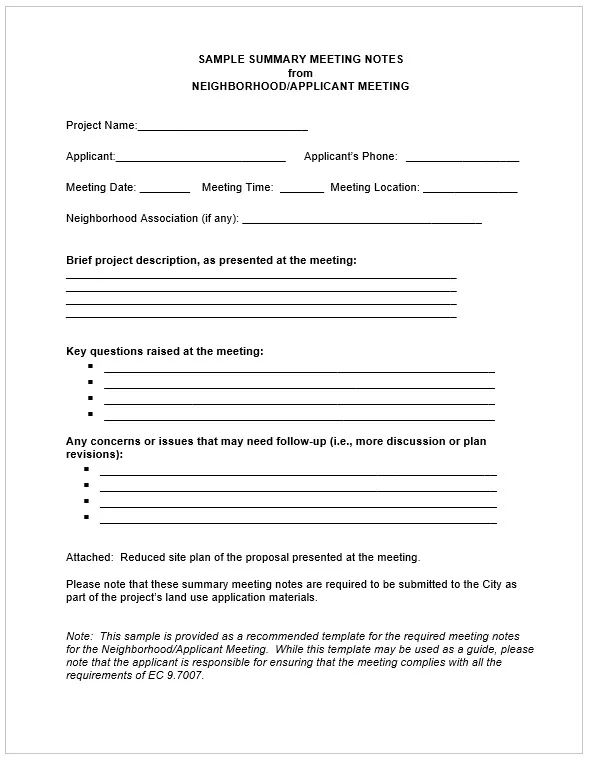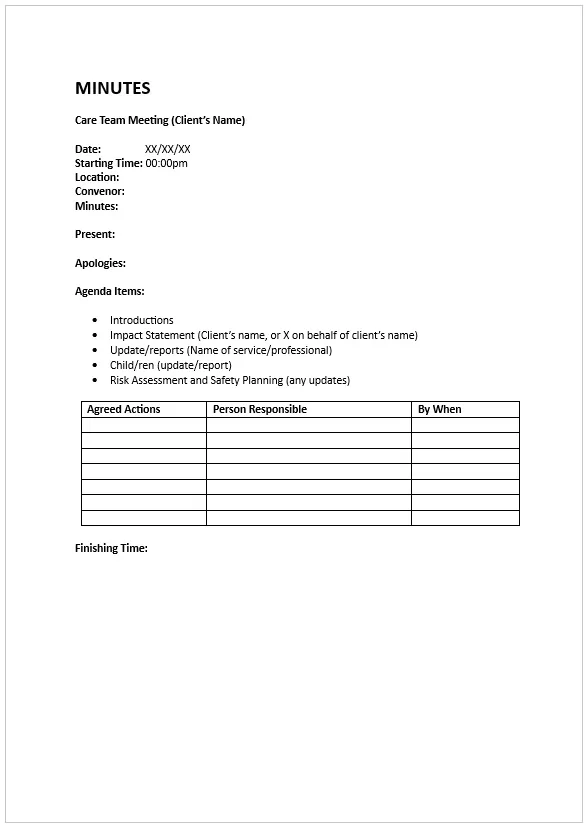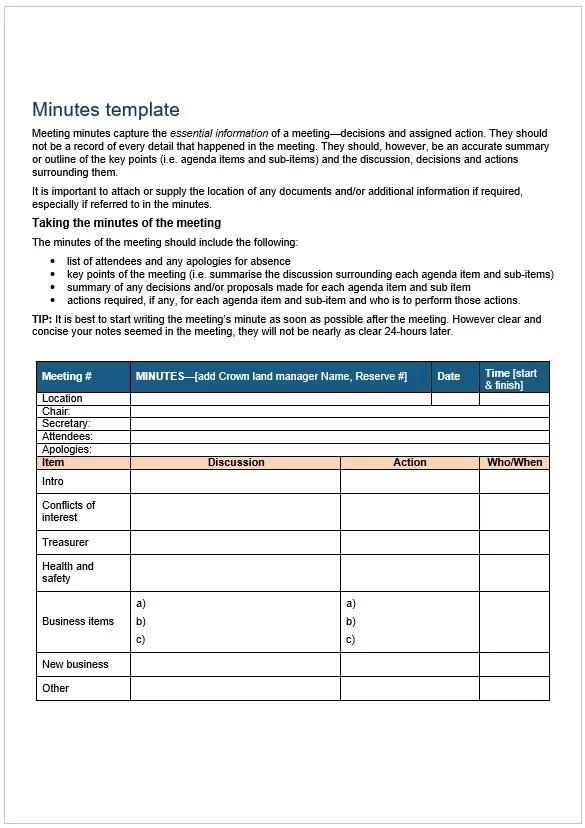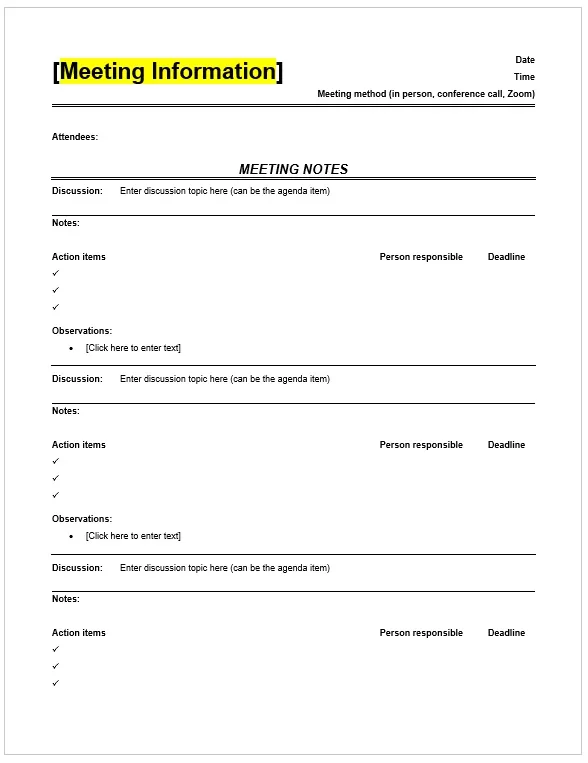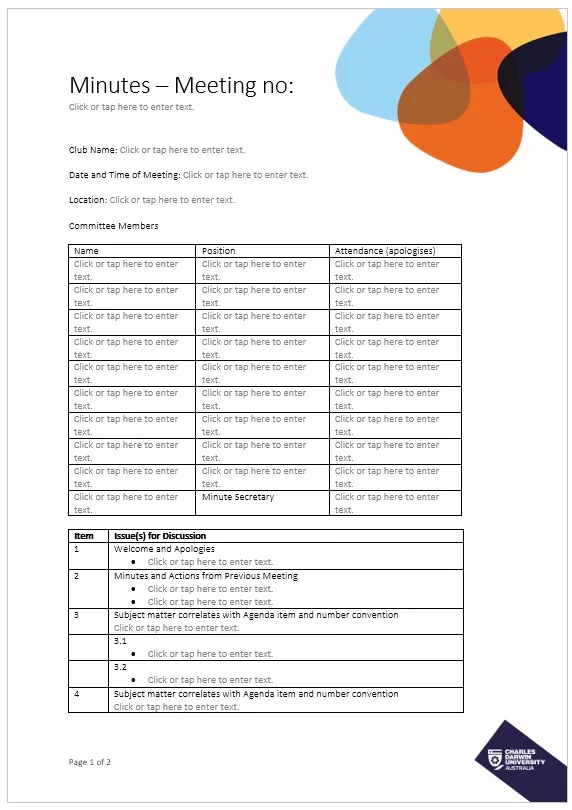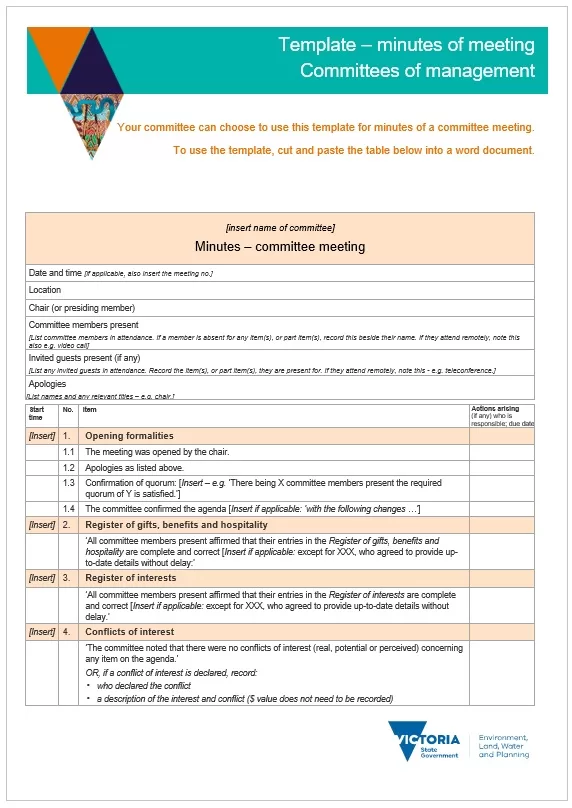Meeting notes templates are standardized formats used to capture discussions, decisions, and action items during meetings. Whether in a corporate boardroom, a team huddle, or a client discussion, documenting what happens during a meeting is essential for clarity, accountability, and follow-through. It is common to have some meeting notes such as; information that has been discussed, decisions made, and action items. These notes become crucial to avoid oblivion or any misunderstanding, missed deadlines, and inefficiencies.
A meeting notes template spares having to reinvent the wheel anew each time; rather, it allows attendees or designated notetakers to focus much more on what is said than how to record it. It provides a good structure for recording essential information like who was present, topics in the agenda, what points have been debated, and who is going to do what. In these fast-paced business environments, these templates save time and ensure uniformity between departments or teams. This is the case-from formal executive meetings to casual team check-ins, a structured note-taking approach contributes to more productive and action-driven meetings, as ideas are captured with roles clearly communicated.
Contents
Anatomy of an Effective Meeting Notes
An effective meeting-notes template is more than just an empty space; it is a strategic design to assist with the clear, concise, and actionable documentation of all essential aspects of any meeting. An effective template will work as a guide or roadmap for those taking notes to ensure that the right information is documented and that no critical pieces of information are overlooked. The design ought to be simple enough so it may be used as is during the meeting and yet detailed to provide clarity for future reference.
Essential Components:
Key elements such as the meeting title, date, time, and location should be placed at the top of every effective minutes template to provide a context. A list of attendees and their functions helps track those who were present and those responsible for specific tasks or contributions. Having an agenda on the template helps maintain focus and ensures all intended discussion topics are addressed. There should be space for discussion points, decisions taken, and disagreements or outstanding issues for each agenda item.
The action items list is one of the most important portions of meeting notes templates. This section should specify the tasks to be carried out, their responsible person, and deadlines for completing those tasks. Lastly, a summary or “next steps” section brings the meeting to an end by stating what will happen following the meeting and how the follow-up will run. In this comprehensive form, meeting notes become proactive tools for accountability and progress tracking rather than passive documentation.
Free Printable Meeting Notes
Here are previews and download links for these templates,
_
Types of Meeting Notes
The variety of meeting notes templates exist to satisfy different meeting types, industries, and communication objectives. Which template is chosen depends on the respective level of formality, straightness of the meeting and expectations regarding follow-up. The boardroom session with the dressed-up executive is never the same as the brainstorming workshop among designers; the format chosen will always impact the very ability to record and act on the outcomes well.
Formal Meeting Minutes for Board or Executive Meetings
Usually, formal meeting minutes are meant for high-level meetings such as board discussions, committee reviews, and shareholder gatherings. These templates are designed to capture information regarding motions, voting, official decisions, and the names of those speaking. Very professional in tone, it most often has a requirement for a legal basis or for purposes of compliance. Accuracy and detail are very important as these minutes are the official record of decision-making within that organization.
Informal Notes for Team Huddles or One-on-One Meetings
Informal meeting notes templates are preferred for internal team meetings, daily stand-ups, or one-on-one check-ins. These formats are highly flexible and allow teams to quickly jot down the important points discussed, status updates, and any follow-up tasks. The main idea is not to capture every word but to quickly note important progress, blockers, and next actions. These templates support agile environments and fast-paced teams, where conciseness and clarity are really appreciated.
Project-Specific Templates for Tracking Progress and Action Items
In project management settings, meeting notes templates are tailored to monitor deliverables, deadlines, and dependencies. These templates are aligned with project timelines and are designed to track task assignments, issue resolutions, and milestone updates. They often integrate with tools like Gantt charts or task boards and help teams stay aligned on shared goals.
Department-Specific Templates for HR, Sales, or IT
Some templates can be customized for certain departments. For instance, an HR team would use interview or appraisal templates. For a sales department, the template may include lead tracking or sales pipeline updates. Technical meeting templates are generally used by IT professionals to document a system, record troubleshooting steps, or report developmental sprints. Each would tend to be reflective of the workflow and communication style of that department.
_
How to Choose the Right Meeting Notes Template?
Meeting notes templates must be chosen carefully since they should reflect the intent and tone of a meeting in relation to its workflow. The selected template must facilitate the easy documenting of relevant information with no added complexity and very little paperwork. Therefore, keep in mind the audience, level of formality, type of meeting, and expected outcomes before making your decision.
Initiate assessing the type of meeting. For formal board meetings, strategic planning sessions, or legal reviews, then a more structured and professional template is needed. Such meetings are usually well minuted and may also have official documentation of the decisions made and clearly organized format for archives. Whereas internal team meetings may benefit more from casual templates – with highlight action items, updates, and quick decisions.
Another important aspect in template selection is the audience. If the notes are external, meant for clients, investors, or senior executives, they must be clear and professional. Templates must not use jargon and present information in an easily digestible format. Unlike internal notes, external notes can be relaxed and flexible.
Again, think about what the main goal of the meeting is. If it has to do with deliverables, then the template should emphasize due dates and who is doing what. If it happens to be a brainstorming session, then allow for free-flowing ideas and creative thoughts. An effective template does more than record; it promotes communication, fosters accountability, and facilitates quick follow-up.
Best Practices for Taking and Sharing Meeting Notes
Essentially, effective meeting notes are not only meant to constitute written documentation; they also help in reinforcing accountability, tracking progress, and aligning team members on next steps. In order to gain maximum value from meeting documentation, one needs to observe best practices regarding both taking notes and distributing them after the meeting.
Tips on Real-Time Note-Taking
Note-taking, done in real time, requires concentration but also structure. Having a designated notetaker helps with the consistency required in a recurrent meeting. A notetaker would normally prepare in advance with a template appropriate for the meeting purpose and agenda. An important goal is active listening to identify the main points of the discussion rather than writing down everything that is said. The notetaker should specifically note decisions, unresolved issues, and assignments, always indicating who the assignments relate to. Bullet points may be effective for live note-taking, but these should be developed into a proper summary before dissemination.
Post-Meeting Distribution and Accessibility
When a meeting wraps up, the next thing on the agenda is to disseminate the meeting notes at once. This promptness sparks the proximity of memories regarding context and immediate actions to be taken for deliverables. Notes will quickly be reviewed for accuracy, clarity, and completeness, and should be made available for direct access by all relevant participants in a centralized place, for example, a project management tool, a cloud folder, or an internal wiki. Such transparency eliminates confusion and keeps all aligned.
Accessibility of Meeting Notes
Accessibility indeed transcends availability. Accessibility manifests in the availability of well-formatted notes that are user-friendly with proper headings, bolded action items, clear sections for decisions, tasks, and deadlines. Great access to the notes can make these lands more productive. Not even the “top-secret” meetings like HR discussions or executive reviews should be opened up to everyone but are only accessible to specific people.
Successful Meeting Notes
Successful meeting notes do not just provide a record for reference but also govern the accountability of delegates, provide clearer directions, and serve as a basis for follow-through. By improving the means by which notes are taken and shared, organizations will ensure that their meetings are effective and their results translate into tangible outcomes.
Frequently Asked Questions (FAQs)
The meeting notes are significant in facilitating communication, accountability, and productivity within an organization. With many organizations adopting formal documentation practices, many queries arise on the use of meeting notes templates in such cases and methods for implementing them. Such and many other such questions will be answered in the next couple of sections concerning their relevance, effectiveness, customization, and overall integration within the modern workflows.
What Is the Main Purpose of a Meeting Notes Template?
In essence, the main goal of a meeting notes template is to set up a regular and systematic framework to record the most essential pieces of information from a meeting: here, the date of the meeting, the attendees, points of discussion, decisions made, and action items. A format invariably saves time and allows consistency between departments since there will no longer be the need to create a new format for each meeting. More importantly, this ensures no important elements are missed while taking minutes. Whatever the meeting, structured notes make it an easier reference for follow-up, decision-making tracking from unclear notes.
How Do Meeting Notes Differ from Meeting Minutes?
The two terms are often treated as interchangeable; however, while their meanings are intertwined, they describe different things. Meeting minutes are usually more formal and kept more carefully for board meetings, perhaps for legal scrutiny or larger bodies of work. The minutes would have a defined organizational format, which includes motions, votes, and detailed records of people speaking. Meeting notes, conversely, are less formal, less regimented, and primarily meant to keep track of main takeaways, project updates, and next steps. Meeting notes are more collaborative; they could contain summaries, bullet points, or even to-do lists, but not a thorough transcription.
Are Digital Meeting Notes More Effective Than Handwritten Ones?
Digital meeting notes are advantageous over handwritten notes because they are more accessible, searchable, and allow for immediate collaboration. Using a digital platform such as Google Docs, Notion, Microsoft OneNote, or project management tools like Asana and ClickUp, the team can easily view and update notes from any device. Digital templates make it easy to style the notes, hyperlink them to different resources, or integrate them with calendars and trackers. Some argue that writing things down by hand helps them to remember better, but digital notes are more useful in team environments and long-term archiving.
Can I Customize a Meeting Notes Template for My Industry?
Indeed, there can and should be variance in meeting notes templates to cater to the specific needs of your industry or team. For example, a marketing team may include sections for campaign updates and performance metrics, whereas an IT department may require fields for technical issues, system updates, and deployment timelines. Customization makes sure that the structure caters to the goals of the meeting and the expectations of those attending. Most templates are easy to modify, with extra sections added or removed, headings changed, and organization-specific language added or taken away.
How Often Should Meeting Notes Be Reviewed or Updated?
The notes ought to be reviewed immediately after the meeting so that inaccuracies can be corrected, unclear points clarified, and assigned tasks confirmed. This guarantees that they are valid and useful. For meetings that recur, maintaining a working notes document can provide future information about ongoing matters and be helpful in avoiding discussion duplication. Amending the notes to include completed action items and new priority items helps to reflect those changes and keep everyone on the same page.
Through answering these typical questions, organizations would be able to glean more about the practicality that meeting notes templates can offer and maximize their usage for more effective communication, tracking responsibility, and meeting positive outcomes from every meeting.
